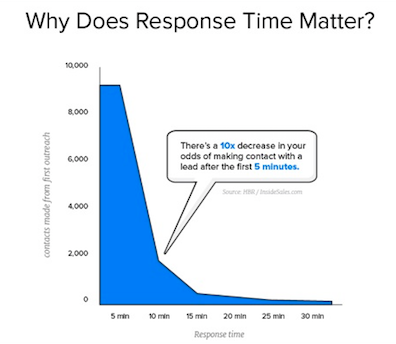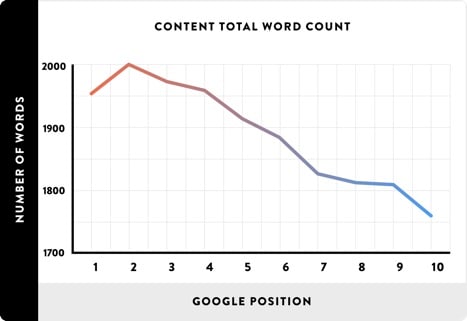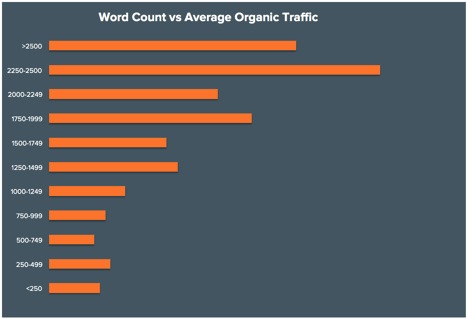As we near the end of 2017, it’s time to review and evaluate how effective your startup’s marketing strategy was over the last 12 months. It’s also the time of the year when you need to start developing the approach you’ll implement once 2018 arrives.
Plenty of changes have occurred in the realm of marketing this year. Guess what? 2018 won’t be any different. In fact, here are ten different digital marketing trends you can expect to see in the new year.
Chatbots
2017 saw the rise of the use of artificial intelligence in marketing through the advent of chatbots – intuitive computer programs that can convert a brand’s target audience by engaging them in conversation on various platforms.
Already, we are seeing a surge of brands using chatbots to improve the turnaround time and customer service they provide in their social media channels. Companies like Drift are now using chatbots to quicken the response time to address questions and inquiries from prospective leads, while startups like Jumper.ai are now providing other startups and more established businesses the tools and services to create their own chatbots quickly.
More interesting is how chatbots are now replacing gated content and forms to generate leads. That’s because chatbots can respond within five minutes from the time that an inquiry is sent. This is critical because a study shows that the odds of qualifying a new lead decrease 10x after the first five minutes.

For a startup, this can mean the difference between closing a sale or losing a potential customer to a competitor.
As we continue to move toward a post-mobile world in 2018, chatbots will become an essential marketing tool, particularly when it comes to driving leads down through the sales funnel. That said, it’s vital for startups to start implementing chatbots in both their social media channels and websites.
Inbound marketing
Perhaps the most notable trend we’re likely to see in 2018 for inbound marketing is the slow, but steady, demise of using forms as a lead generation tool.
Up until recently, landing pages and forms have been one of the fundamental pillars of inbound marketing. They are the primary tools used by startups and established businesses to generate leads to guide through the sales funnel. However, as Neil Patel puts it, people hate filling out forms to download content that’s supposedly free.
More importantly, people using the internet expect to receive a solution to their concern or question right now. They’re no longer willing to wait 24 to 72 hours for someone to get back with the answer.
While forms may slowly be on the decline, other inbound marketing strategies to generate leads will continue to remain reliable and efficient in 2018. One such tactic is guest blogging. In addition to establishing yourself as an authority in your niche and helping drive traffic to your website, guest blogging on highly-authoritative sites can help increase the number of backlinks to your site with a high domain authority. Google and other search engines still consider these as one of the critical factors that will affect your site’s ranking on their results page.
Another tried-and-true inbound marketing strategy that will continue to make headway in 2018 is long-form blog posts. People are now searching the internet for content that’s of high-quality, high-value and that gives in-depth information about a particular topic.
How long of a blog post are we talking? One study shows that websites that Google lists on its first page are those that have blog posts that average 1,890 words.

On the other hand, HubSpot’s latest report shows that blog posts that receive the highest levels of organic traffic have between 2,250 and 2,500 words.

That said, aiming to consistently publish a 2,000-word in-depth blog post as part of your inbound marketing strategy will help increase your site’s traffic and ranking in the coming year.
Related: Why Digital Marketing is Essential to Your Startup’s Growth Strategy
Influencer marketing
The demand for influencer marketing is expected to increase, and influencers know this. That is why one of the trends we can expect in influencer marketing is the increase in what influencers expect to receive in exchange for their services. In addition to providing influencers with financial compensation, you’ll also need to show them other ways in which they’ll benefit from collaborating with your startup.
With the increase in demand, the need to measure key performance indicators (KPIs) and the return on investment (ROI) is going to be even more essential. For this reason, we can expect influencer marketing platforms like TapInfluence, Rep, Mention and Gatsby.ai to provide startups and established brands with the tools and software that will help make tracking KPIs and ROI easier.
However, the increasing demand for influencer marketing will also signal more stringent FTC guidelines and policies. Already, we are seeing the FTC going after prominent brands whose influencer marketing campaigns violate their guidelines. As such, startups need to ensure that not only are the influencers they work with are a fit for their target market, but also be aware of FTC guidelines and, more importantly, adhere to them.
Lifecycle marketing
Simply put, lifecycle marketing is a strategy where the buyer is in control. That’s because lifecycle marketing is the process of creating a marketing strategy that focuses on integrating a wide range of marketing communication channels like creating referral campaigns using tools like Viral-Loops to guide them through their buyer’s journey. The key here is to make sure that you cover all the possible touchpoints where you can reach out and engage with your customers.
One of the challenges startups face with lifecycle marketing is the ability to automate their customers’ journey.

Since people want answers to their questions and problems right now, it’s vital to make sure that certain aspects of your marketing strategy are “always-on.” That said, we can expect that in 2018, chatbots will become an integral tool used in lifecycle marketing since these bots are always available to promptly attend to your customers.
Videos
Video killed the radio star. However, as the demand for video continues to grow at a dizzying rate, it’s only a matter of time before it destroys other types of media.
In fact, it’s expected that 80 percent of content that will be published online by 2020 will be video.
One major factor contributing to the continuous growth of video as a marketing tool is the disdain consumers have for being sold something. Instead, they want to be educated, entertained and moved. Videos help companies provide this to their customers by incorporating branded entertainment videos in their strategy, which are primarily video ads with a storyline embedded in them.
Another is the increasing popularity of videos on social media. While YouTube remains at the forefront of video content, other channels like Facebook and Instagram are quickly gaining ground. Already, Facebook videos are receiving 135 percent more organic views compared to photos, while almost one-quarter of Instagram’s users are now spending more time watching Instagram Stories (videos posted by Instagram users that vanish after 24 hours), compared to viewing photos on their feed.
Native advertising
Gone are the days when native advertising was exclusive to blogs. As more and more people use mobile devices to access the internet, we expect to see more native ads pop up on different platforms and mobile applications. Already, we see this trending among apps like Waze, which highlights various stores and establishments on its maps.

We can also expect that majority of the native ads published in 2018 will be user-generated content. Just like influencer marketing, using user-generated content in the form of surveys and polls can help brands build trust and connect with their customers.
However, just like influencer marketing, expect more stringent FTC guidelines concerning the use of native ads on different platforms.
Intelligent content
Personalized content is going to be more essential than ever before, as standards become higher. It’s no longer enough that you create content that’s based on targeted keywords and your startup’s buyer persona. Instead, companies now have to focus on creating and executing content for every step of their journey so that every customer feels that the journey is personalized just for them.
In a study done by the Digital Marketing Institute, 66 percent of consumers said that they’d be willing to switch to another brand if they feel that they’re being treated more as a person rather than a statistic.
Big data
Earlier this year, StartupNation predicted that startups will begin using big data analytics in their marketing strategy, which was spot on!
Big data is no longer exclusive to tech geeks and data analysts. The use of big data analytics can equip marketers and startups with a more in-depth understanding of their target market.
In case you’re not familiar with big data, it refers to large volumes of information gathered using predictive and behavior analytics. Until recently, big data was used to track things like climate information and cell phone GPS signals. With technology advancements, however, B2B marketing and sales teams are now using big data to gather more detailed information to analyze their target audience’s wants and needs better.
As big data continues to make its way into marketing and sales, we can expect a demand not just for skilled professionals, but also big data platforms like DataBox to rise. If you’re running a SaaS or tech startup, this shift in making big data more mainstream in marketing can prove to be promising.
Sign Up: Receive the StartupNation newsletter!
Account-based marketing
In 2017, account-based marketing proved itself to be an effective strategy to help a company’s marketing and sales team. With the advancements in marketing technology, it’s very likely that we’ll see an increase in companies leveraging third-party programmatic technology to further increase its reach and scope in 2018.
At the same time, programmatic ABM technology will continue to provide more profound insights on which accounts are most engaging with your marketing efforts.
Voice search
According to Google, one out of five searches currently done on its mobile app is through voice search.
This, plus the fact that 60 percent of internet users now use a virtual assistant (e.g., Apple’s Siri, Amazon Alexa) and voice search within the past 12 months, are clear indications that tell us we’ll continue seeing a rapid increase in the use of voice search in 2018.

Much of this is due to the fact that it’s far easier to say a search than typing it. That said, startups need to begin implementing voice search in their SEO strategy. The best way to do this is by using long-tail keywords focusing on natural spoken language. In other words, the keywords to use in your content are those that are written just how you would typically say it.
No doubt, 2018 is going to be a year of many changes in the world of marketing. Keep these upcoming digital marketing trends in mind as you create your 2018 marketing strategy. Better yet, start experimenting with these marketing trends right now to see which will yield you the highest ROI for your marketing efforts.






